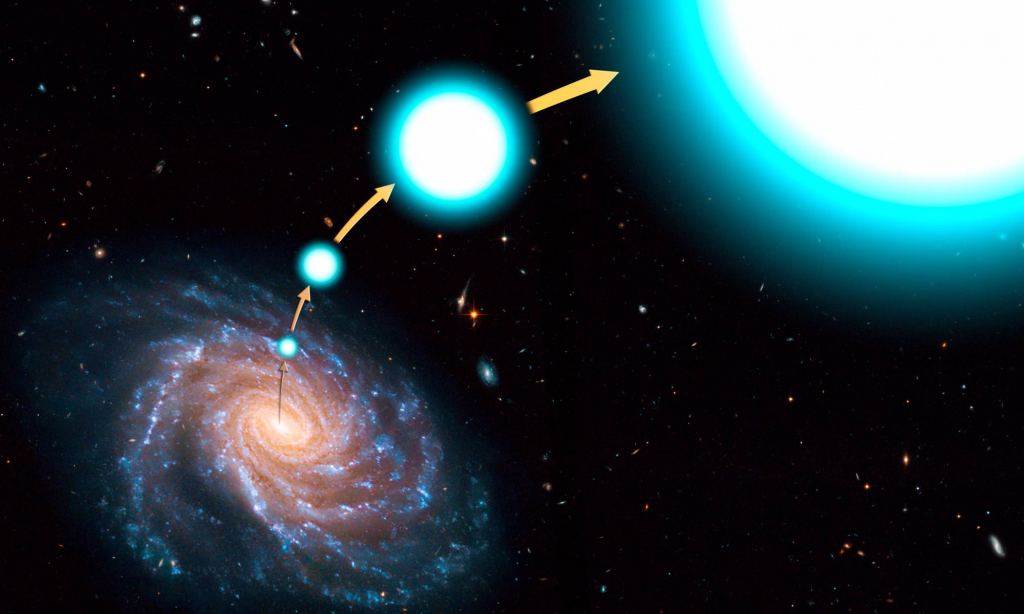These are the Fastest Stars in the Galaxy
By Scott Alan Johnston
Until recently, there were only ten known stars on trajectories that will allow them to escape the Milky Way Galaxy, thrown astray by powerful supernova explosions. A new study using data from ESA’s Gaia survey this June has revealed an additional six runaways, two of which break the record for the fastest radial velocity of any runaway star ever seen: 1694 km/s and 2285 km/s.
The supernovas that launched these stars are a special kind known as Type 1a. Famous for their usefulness in determining astronomical distances (because they always explode with the same brightness), Type 1a supernovas occur in binary star systems, where one white dwarf slowly digests the other, stripping stellar material away as they circle each other. When enough material has been accreted from one star to the other, the feasting star will eventually reach what is called the ‘Chandrasekhar Mass’ after Indian-American theoretical physicist Subrahmanyan Chandrasekhar.
At this critical mass, the growing star can no longer resist the gravitational pressure, and collapses in on itself, resulting in a massive explosion.
There are still some open questions surrounding Type 1a supernova. In theory, white dwarf binaries that reach the Chandrasekhar Mass should be rarer than they are. This has caused astronomers to consider an alternative method to cause a similar supernova: a double detonation.

In this scenario, a white dwarf steals helium from the shell of it’s neighboring star, and the helium detonates first, causing a shockwave that subsequently ignites a second detonation, this time of the star’s carbon core.
In such a circumstance, as long as the feasting star has a large enough carbon core, the white dwarf can go supernova without approaching the Chandrasekhar limit.
In a double-detonation scenario, the remains of the neighboring star is shot out into space, with a similar velocity at which it was orbiting its now-deceased partner. This process lets the runaway achieve blistering speeds through – and eventually out of – the Milky Way.
“These runaway White Dwarfs are smoking guns of double-degenerate detonations,” write the authors of the new study.
Single detonation supernovae can also produce runaway stars. In these instances, it is the remains of the exploding star that reaches extreme velocities, instead of the partner star. Such events are called type 1ax supernova, in which the explosion fails to completely destroy the star, leaving behind the speedy remains of the white dwarf’s core.
These runaways are still very fast, but not quite as fast as those caused by double detonations.
Researchers are able to use differences in velocity and spectroscopic signatures to determine the different origins of runaway stars, and classify them accordingly. As the population of observed runaways grows, it should eventually help constrain the frequency with which each type of supernova occurs.
For now, the new fastest star in the galaxy is J0927, and the runner-up, also newly discovered, is J1235.
J0927 has a radial velocity almost twice that of any other star in the galaxy, with a few exceptions. The stars that orbit closest to the black hole at the center of our galaxy, for example, whip around it at breakneck speeds, and are able to approach the velocity of J0927. Those objects, however, are trapped in orbit, and are not on a runaway trajectory.
Learn More:
Elbadry et al., “The fastest stars in the Galaxy,” ArXiv preprint.
The post These are the Fastest Stars in the Galaxy appeared first on Universe Today.

June 13, 2023 at 12:21AM
via Universe Today read more...

Post a Comment